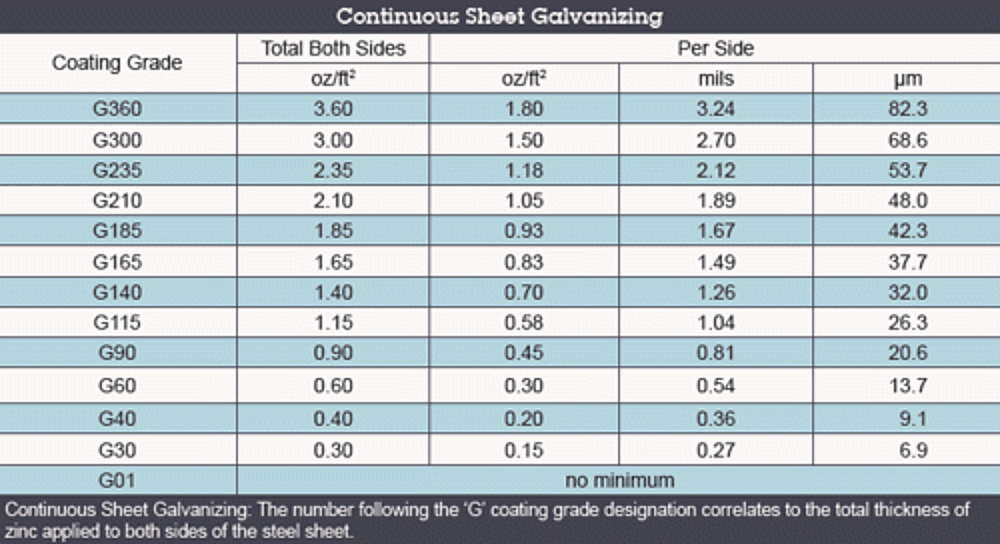Coating Thickness vs. Coating Weight
Note: Have questions about continuous hot-dip galvanizing? Contact the GalvInfo Center
The usual criterion for determining the expected service life of zinc coatings is thickness: the thicker the coating, the longer the service life. This is an acceptable criterion when comparing zinc coatings produced by the same process.
When comparing zinc coatings produced by different processes, the thickness criterion cannot be used without considering the amount of available zinc per unit volume. It is also important to keep in mind various ASTM or other specifications as they relate to coating weight or thickness, and reduce the coating requirements to a common denominator prior to making a comparison of different zinc coatings.
While the coating densities for some of the different types of zinc coatings are nearly identical, others differ considerably. The coating thicknesses required to equal 1 oz of zinc/ft2 of surface, are displayed in the Coating Densities table below.
| Hot-dip galvanizing (batch or continuous), electrogalvanizing, zinc plating | 1.7 mils (43µm) |
| Zinc Spraying (metallizing) | 1.9 mils (48µm) |
| Mechanical Plating | 2.2 mils (55µm) |
| Zinc-Rich Paint | 3-6mils (75-150µm) |
Each of these thicknesses, representing the same weight per unit area of zinc, would be expected to provide equivalent service life; i.e. 1.7 mils of hot-dip galvanized would give about the same service life as 2.2 mils of mechanical plating or 3 to 6 mils (depending on the paint formulation) of zinc-rich paint. It is also important to remember that for all continuous galvanized sheet materials, including electrogalvanized, the coating weight is given for the total zinc weight for both sides of the sheet. To obtain the amount of zinc per unit area of surface, the weight given must be divided in two, assuming equal distribution on both sides. For example, an ASTM A 653 Class G90 sheet contains 0.90 oz zinc/ft2 of zinc or about 0.45 oz/ft2 per side, as seen in the table below.

See Also: Zinc Coatings Publication
© 2025 American Galvanizers Association. The material provided herein has been developed to provide accurate and authoritative information about after-fabrication hot-dip galvanized steel. This material provides general information only and is not intended as a substitute for competent professional examination and verification as to suitability and applicability. The information provided herein is not intended as a representation or warranty on the part of the AGA. Anyone making use of this information assumes all liability arising from such use.

